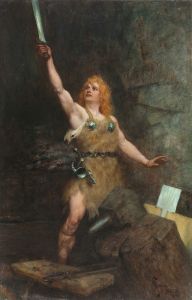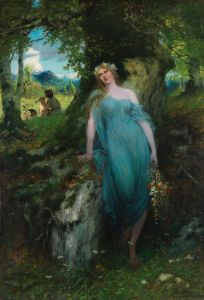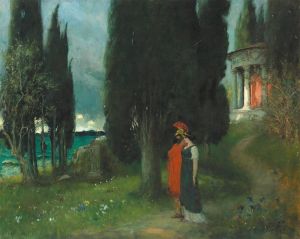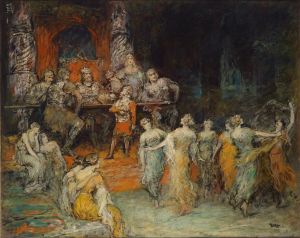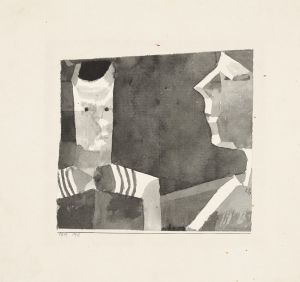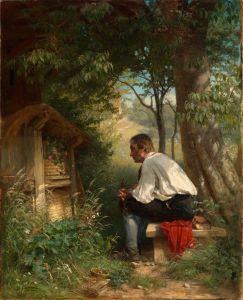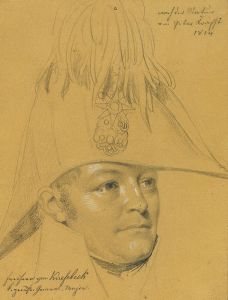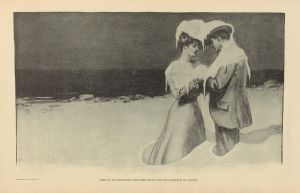
Wotan’s farewell
A hand-painted replica of Ferdinand Leeke’s masterpiece Wotan’s farewell, meticulously crafted by professional artists to capture the true essence of the original. Each piece is created with museum-quality canvas and rare mineral pigments, carefully painted by experienced artists with delicate brushstrokes and rich, layered colors to perfectly recreate the texture of the original artwork. Unlike machine-printed reproductions, this hand-painted version brings the painting to life, infused with the artist’s emotions and skill in every stroke. Whether for personal collection or home decoration, it instantly elevates the artistic atmosphere of any space.
Ferdinand Leeke was a German painter known for his works that often depicted scenes from operas and mythology. One of his notable paintings is "Wotan’s Farewell," which draws inspiration from Richard Wagner's opera "Die Walküre," the second of the four operas that constitute "Der Ring des Nibelungen." Leeke's painting captures a poignant moment from the opera, reflecting his interest in Wagnerian themes and his ability to translate musical drama into visual art.
"Die Walküre" is a significant work in Wagner's Ring Cycle, and "Wotan’s Farewell" is one of its most emotional scenes. In the opera, Wotan, the chief of the gods, is forced to punish his favorite daughter, Brünnhilde, for defying his orders. Despite his deep love for her, Wotan must strip Brünnhilde of her divine status and put her into a deep sleep, surrounded by a magical fire that only a hero can penetrate. This scene is laden with themes of sacrifice, love, and the inevitability of fate, which Leeke captures in his painting.
Ferdinand Leeke was born in 1859 in Burg bei Magdeburg, Germany. He studied at the Academy of Fine Arts in Munich, where he was influenced by the Munich School's emphasis on realism and attention to detail. Leeke became known for his ability to convey complex narratives through his art, often focusing on mythological and operatic subjects. His works are characterized by their dramatic compositions and rich color palettes, which bring the stories he depicts to life.
In "Wotan’s Farewell," Leeke uses his skills to convey the emotional depth of the scene. The painting likely features Wotan in a moment of sorrow and resolve, as he prepares to leave Brünnhilde to her fate. The use of light and shadow, as well as the positioning of the characters, would be intended to highlight the tension between duty and love that defines this moment in the opera. Leeke's attention to detail and his ability to capture the essence of Wagner's music in visual form make this painting a significant representation of the operatic scene.
Leeke's work, including "Wotan’s Farewell," contributes to the broader tradition of visual art inspired by Wagner's operas. During the late 19th and early 20th centuries, Wagner's works were a popular source of inspiration for artists, who sought to capture the grandeur and emotional intensity of his music. Leeke's paintings are part of this cultural movement, reflecting the intersection of visual art and music during this period.
While specific details about the creation and current location of "Wotan’s Farewell" by Ferdinand Leeke may not be widely documented, the painting remains an example of how artists have historically engaged with operatic themes. Leeke's ability to translate the dramatic and emotional elements of Wagner's operas into his paintings ensures that his work continues to be appreciated by those interested in the intersection of art and music.






